Angela Slatter's Blog, page 43
April 18, 2017
The Perfect Weapon: Delilah S. Dawson
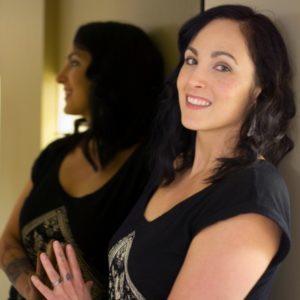 Delilah S. Dawson is the author of Star Wars: The Perfect Weapon and Scorched, the Blud series, the Hit series, Servants of the Storm, the Ladycastle comic, and Wake of Vultures and the Shadow series, written as Lila Bowen.
Delilah S. Dawson is the author of Star Wars: The Perfect Weapon and Scorched, the Blud series, the Hit series, Servants of the Storm, the Ladycastle comic, and Wake of Vultures and the Shadow series, written as Lila Bowen.
1. What do readers need to know about Delilah S. Dawson?
Well, I write in a ton of genres– Fantasy, Science Fiction, YA, Horror, Romance, Star Wars, Comics. I’m very active on Twitter, @DelilahSDawson. And I love gluten free cupcakes more than life.
2. Who were/are your literary heroes/influences?
The three books that had the biggest influence on me growing up were Watership Down, The Mists of Avalon, and The Valley of Horses, so that should basically tell you everything. 
Mermaids and Fairy Midwives
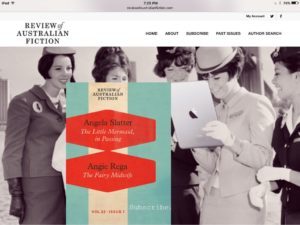 Over at the Review of Australian Fiction, Angie Rega and I have stories in the latest issue!
Over at the Review of Australian Fiction, Angie Rega and I have stories in the latest issue!
Mine is “The Little Mermaid, in Passing” (which took some inspiration from Mike Mignola’s “The Third Wish” and Damien Angelica Walters’ “Sing Me Your Scars”).
Angie’s is the very dark “The Fairy Midwife”!
April 14, 2017
And the results of the Aurealis Awards are in!
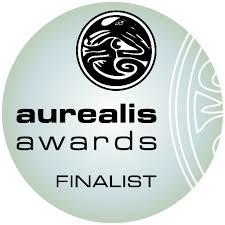 Big congrats to all the winners and shortlistees, and a huge thanks to the judges, the organising committee, and the dear readers! And thank you so much for choosing A Feast of Sorrows: Stories as winner of the Best Collection. Jack Dann and Alan Baxter are worthy stablemates (check out Concentration and Crowshine).
Big congrats to all the winners and shortlistees, and a huge thanks to the judges, the organising committee, and the dear readers! And thank you so much for choosing A Feast of Sorrows: Stories as winner of the Best Collection. Jack Dann and Alan Baxter are worthy stablemates (check out Concentration and Crowshine).
It’s fantastic to see so many friends on these lists and so much new talent coming up through the ranks.
Quite frankly everything on the shortlists should form the basis of your reading and gift-giving for the rest of the year. Go! Buy! Read!
April 11, 2017
The Pauper Prince and the Eucalyptus Jinn: Usman Tanveer Malik
 Today I’m very pleased to host at the blog the astonishingly talented Usman Tanveer Malik.
Today I’m very pleased to host at the blog the astonishingly talented Usman Tanveer Malik.
Usman T. Malik is a Pakistani vagrant camped in Florida. He reads Sufi poetry, likes long walks, and occasionally strums naats on the guitar.
His fiction has won the Bram Stoker Award and been nominated for the Nebula. His stories have appeared or are forthcoming in Usman T. Malik among other venues. He is a graduate of Clarion West.
In Dec 2014, Usman led Pakistan’s first speculative fiction workshop in Lahore in conjunction with Desi Writers Lounge and Liberty Books.
1. First of all, what do new readers need to know about Usman Tanveer Malik?
When I was ten I got lost in Paris. After several hours of futile wandering, a pretty young dress shop clerk helped me figure out where my hotel was and walked me over. It was a few blocks away. I kept hoping she’d kiss me goodbye, but she never did.
2. Which book, either fictional or otherwise, would you say taught you the most about writing?
“About Writing” by Samuel R Delany
“It” by Stephen King
3. What was the inspiration for your British Fantasy Award-winning novella “The Pauper Prince and the Eucalyptus Jinn”? 
The true story of Mughal princess Sultana Begum who languishes in poverty these days.
http://razarumi.com/sultana-begum-the-great-grand-daughter-in-law-of-last-mughal-emperor/
4. What does a working day look like for you? Where do you fit your writing in?
I’m doing an academic fellowship these days, not writing much at the moment. Usually, I write at night around 10 or so or on my off days.
5. Which writers are your biggest influences?
Naiyer Masud, Kelly Link, Philip Roth, Joyce Carol Oates, Flannery O’Connor, Ted Chiang, Stephen King, Rumi, the Urdu poets Iqbal, Faiz Ahmad Faiz, and Ghalib.
6. You can take five books with you to a desert island: which ones do you choose?
Naiyer Masud: The Collected Stories
It by Stephen King
Magic for Beginners by Kelly Link
Collected Stories by Flannery O’Connor
The Essential Rumi by Coleman Barks
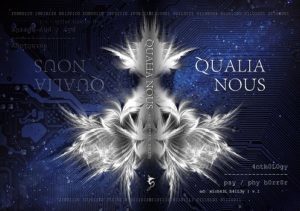 7. Can you remember the first story you read that made you think “I want to be a writer”?
7. Can you remember the first story you read that made you think “I want to be a writer”?
“Where are you going, Where have you been” by Joyce Carol Oates.
8. What projects are you working on right now?
I’m not writing anything new but am working with friends on the final steps of setting up Pakistan’s first Science Fiction award called The Salam Award for Imaginative Fiction. The award is named after the great Pakistani scientist and Nobel Prize winner Dr. Abdus Salam who was vilified by his own people for belonging to a marginalized community. It will be officially launched at the end of January, 2017.
9. Do you prefer the writing part of the creative process or the editing part? 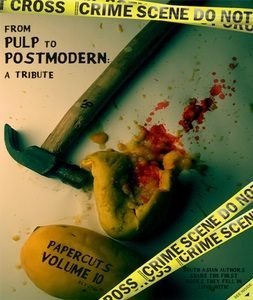
The writing part when I hit my stride and feel the words flow like musical notes.
10. What’s next for Usman Tanveer Malik?
Hopefully more writing once I’m done with the busy part of my academic fellowship.
April 8, 2017
Finnegan’s Field and Sweet Potato Films

Art by Greg Ruth
I’m so excited to announce this: I’ll be collaborating with the wonderful Vicki Madden of Sweet Potato Films (writer of the award-winning The Kettering Incident) on a project inspired by my novelette “Finnegan’s Field“, which was published by Tor.com last year (and for which the amazing Greg Ruth did this awesome cover).
I’m a huge fan of Vicki’s work, so this is a dream come true … if your dreams involve schlepping around Tasmania in winter looking for creepy locations and inventing dark tales – and mine do!
April 7, 2017
Ditmar Shortlists
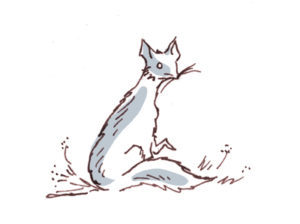
White fox by Kathleen Jennings
The Ditmar shortlists are out and I’m happy to say that Vigil and Finnegan’s Field both scored a spot.
Vigil is listed for Best Novel and Finnegan’s Field for Best Novella/Novelette.
And in very good company as well – congrats to all the shortlistees!
April 6, 2017
April Patreon
[image error]So, Newsletter the Second has been sent to 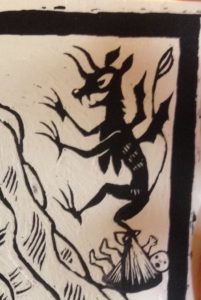 all of my Patrons, with exclusive snippets from upcoming stories.
all of my Patrons, with exclusive snippets from upcoming stories.
And for the Monkshood level, their special reward has also been posted.
Corpselight …
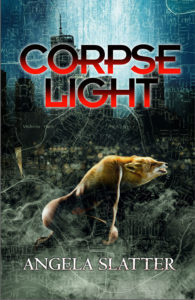 … so, as you know we’ll be launching Corpselight, the second of the Verity Fassbinder books, on 14 July at the Brisbane Square Library.
… so, as you know we’ll be launching Corpselight, the second of the Verity Fassbinder books, on 14 July at the Brisbane Square Library.
Pulp Fiction Booksellers will be doing the selling of books that night (obviously), but you can also go in or phone the store and pre-order your copy.
You can collect it at the launch or from the store. I’ll make sure I sign it if the latter is the case … or bring it along to the launch and I will definitely sign it! I’m basically a captive with cupcakes for two hours.
Meanwhile, over at Gamut …

Luke Spooner
… my vampire story, “The Night Stair” (from the World Fantasy Award-winning The Bitterwood Bible and Other Recountings), is being reprinted in four parts. First part is up today, so if you’re a subscriber or would like to become one, head here and do the thing.
The artwork is by the amazing Luke Spooner and I love it! Thanks, Gamut Magazine.
“Do not wish for more than is given. Do not ask them to make you as they are.”



